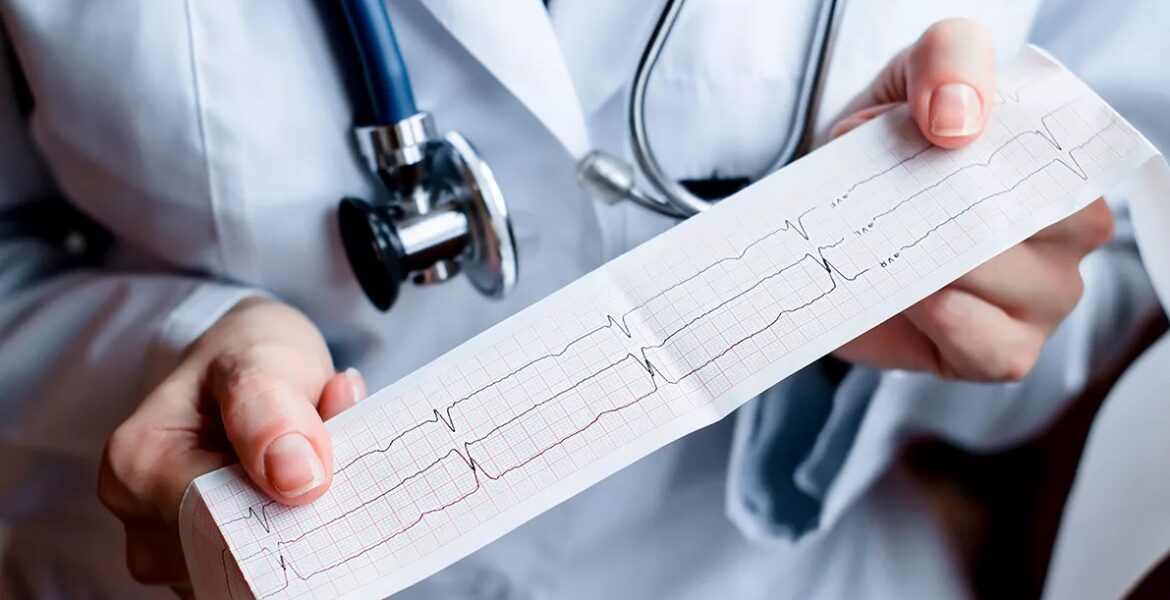In Greece, the percentage of patients with atrial fibrillation is estimated at 200,000 in the general population, explains Dr Charalambos Kossyvakis Cardiologist, Director of Electrophysiology and Pacing at the Metropolitan Hospital
Atrial fibrillation is the most common arrhythmia in adults and, under certain conditions, is associated with an affected quality of life, increased occurrence of ischemic strokes, heart failure, and mortality. Worldwide there are about 40 million people who suffer from atrial fibrillation, with an increasing trend, and 1 in 4 people after the age of 40 have a significant chance of developing it. In Greece, the percentage of patients with atrial fibrillation is estimated at 200,000 in the general population. It is estimated that it is responsible for 25% of the total rate of ischemic strokes, which usually have a more serious clinical picture.
Types of atrial fibrillation:
• Paroxysmal atrial fibrillation: The arrhythmia comes and goes, lasting from minutes to hours without any therapeutic intervention and does not exceed seven days.
• Persistent atrial fibrillation: The arrhythmia lasts continuously for more than seven days and needs therapeutic intervention to stop.
• Chronic persistent atrial fibrillation: The arrhythmia lasts without interruption for more than a year.
• Permanent atrial fibrillation: The arrhythmia is permanent, and no further effort is attempted to correct it.
How is it caused?
Under normal conditions, our heart, which consists of four chambers, two atria (right and left) in the upper part and two ventricles (right and left) in the lower part, works with an electric current produced by a specialised centre in the right atrium and transported through a special conductor (bundle of His) at all its points.
This specialised centre, the heart's natural pacemaker, is called the sinus node and ensures that our heart will beat rhythmically and as fast as it needs to, according to the activity we have at any given moment.
What are the symptoms?
Fatigue, palpitations, "butterfly" feeling in our heart, dizziness, difficulty breathing, chest pain, and, more rarely, fainting are the usual symptoms. It should be mentioned that a percentage of people may not present particular symptoms, and a random check can diagnose arrhythmia. They are the category of patients with "silent" atrial fibrillation and are at the same, perhaps even greater, risk of stroke than those who show symptoms as they do not receive the appropriate medication.
Diagnostic examinations
When we experience any of the above symptoms, we should seek medical help; ideally, when we have the symptom, as with a cardiogram, we can diagnose the arrhythmia. As the arrhythmia can come and go, the absence of atrial fibrillation on the electrocardiogram does not rule out the possibility of having atrial fibrillation, in which case monitoring by other means (e.g. 24-hour Holter rhythm) will be necessary. Additional tests will be needed: Heart Triplex, blood test, and thyroid function test.
Treatment
When we are finally diagnosed with atrial fibrillation, we should, as the case may be, receive treatment which may include:
• Anticoagulant treatment: Depending on other conditions that may coexist, we may need to take anticoagulant medicine to reduce the risk of stroke. Diseases that increase the risk of stroke are arterial hypertension, diabetes mellitus, heart failure, previous ischemic stroke and vascular disease. In addition, women and those over 65 years of age present an increased risk. Anticoagulant medicine "thins" the blood by preventing the formation of clots that can leave the heart and block arteries that supply blood to the brain, causing an ischemic stroke.
• Antiarrhythmic treatment: Medicines that prevent the occurrence of atrial fibrillation as well as medicines that reduce how fast our heart "runs" in case it occurs.
• Improvement and treatment of all factors that contribute to the frequent occurrence of arrhythmia: Regulation of blood pressure, sugar, and cholesterol. Those patients who also suffer from other conditions such as heart failure, coronary artery disease, hyperthyroidism, and sleep apnea should receive optimal treatment. In addition, sufferers should avoid a sedentary lifestyle and alcohol abuse, stop smoking, reduce excess body weight and include exercise in their daily routine.
• Transcatheter ablation: Those who show severe symptoms despite antiarrhythmic medication or do not wish to take it for a long time or experience side effects from it can undergo percutaneous invasive treatment. This is done from the leg, and through the femoral vein, a cable is advanced inside the heart, which, through heat or cooling or pulses, disables the points (pulmonary veins) that trigger the appearance of the arrhythmia. It is a particularly effective and safe operation, preventing the recurrence of arrhythmia in a percentage of 70 to 80% compared to 30% of antiarrhythmic drugs. It should be noted that the effectiveness of the operation decreases as the episodes of atrial fibrillation increase. It is, therefore, very important for the doctor to promptly refer a patient with atrial fibrillation in the initial stage of the arrhythmia when it is still paroxysmal in nature (1-2 episodes)
• Implantation of a pacemaker combined with ablation of the bundle of His: In cases where the solutions mentioned above to correct the arrhythmia have failed, and the patient has significant symptoms or the heart has very elevated pulses. This is a solution in which the control of the pulses is done exclusively by the pacemaker as the special current conductor of the heart (bundle of His) has been neutralised through ablation.
At the Metropolitan Hospital, all modern invasive treatment techniques are applied with three-dimensional mapping and the use of high-frequency current, balloon cryo coagulation and the most innovative method, pulsed-field ablation (Pulsed Field Ablation), with high safety and efficiency.
Charalampos Kossyvakis is a Cardiologist, Electrophysiologist, Interventional Cardiologist, Director of Electrophysiology and Pacing at the Metropolitan Hospital
READ MORE: The Super Herb That Relieves Stress, Period Pain, and Headaches: Unveiling 4 Hidden Benefits of Valerian.


